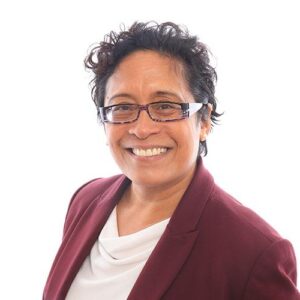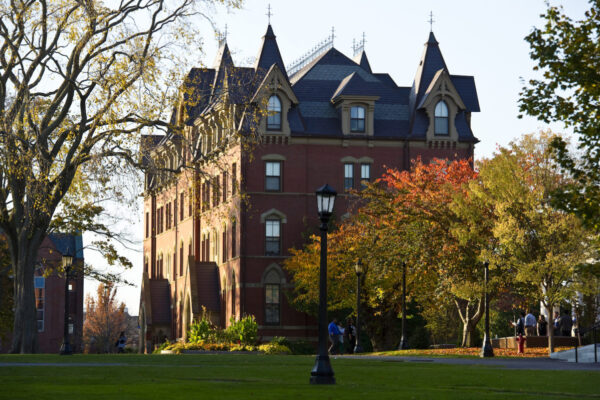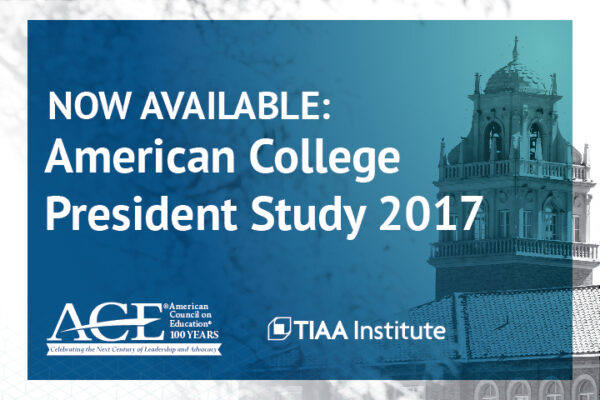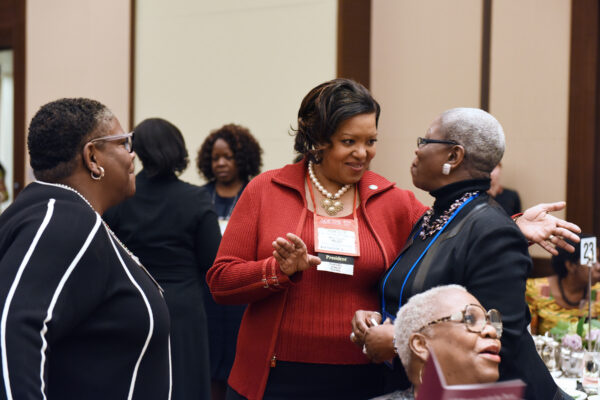This blog post is part of the American College President Study body of work generously supported by the TIAA Institute.
Since the founding of American higher education, college and university presidents have generally been White men—even initially at women’s colleges. While women have been outpacing men in degree attainment for decades, the leadership of colleges and universities has remained predominantly male.
The American Council on Education has been surveying college presidents and reporting data on the presidency since 1986, when its American College President Study (ACPS) was launched. Since then, the percentage of women presidents has remained flat at approximately 25 to 30 percent. Sexism, insufficient pipelines, personal choices, and other rationales are the usual reasons given. But we explored a different bias: Are the pathways to the presidency different for men and women?
In short, yes, and the bias is against women not in academic roles (e.g., provost, dean of the faculty, and deans of academic areas).
In “Pathways to the Presidency: An Analysis of the Gender Gap at American Four-Year Colleges and Universities,” our chapter in Voices from Women Leaders on Success in Higher Education: Pipelines, Pathways, and Promotions, we explored how this bias takes shape. We created a unique dataset of approximately 2,700 public, nonprofit and for-profit four-year institutions. The dataset merges publicly available information with 2017 data from the Integrated Postsecondary Education Data System (IPEDS), adding information such as each president’s longevity in the role, their role before the presidency, their educational background, and their race and ethnicity, if available. It also allows analysis of the differences between men and women presidents by type of institution, geographic region, urbanicity of institution, minority serving status, total assets, and other variables IPEDS collected.
Women led 713 (26.2 percent) of the 2,723 institutions in our dataset. Their average tenure of 6.17 years was slightly less than the tenure of men at 6.43 years, although the median was a full year less (three years for women and four years for men). A large majority of both men and women presidents were employed in higher education prior to becoming president (83.8 percent), with 39.7 percent in an academic role, 19.2 percent already in a presidency, and 14.8 percent serving as chief academic officer or provost. These findings differ slightly from the ACPS data on college presidents, but most significantly—for our purposes—42.7 percent of ACE respondents rose to the presidency through a chief academic officer or provost role. The 3 percentage point difference between ACE’s survey and our findings might be due the sample bias in ACE’s survey submission.
Using our data, we disaggregated this pathway by gender and found a greater percentage of women presidents (39.1 percent) held academic roles prior to their presidency compared with men (33.1 percent) and, subsequently, more women came from an academic institution (76.6 percent) compared with men (69.7 percent). Slightly more men (19.8 percent) were in presidential roles prior to their current presidency compared with women (17.5 percent). Most significantly, 19.5 percent of women presidents were chief academic officers before becoming president, compared with 13.1 percent of men presidents.
Although this analysis is not causal, it does highlight important trends and patterns regarding men’s and women’s pathways to the presidency. The percent of women presidents has remained flat for many years, and this analysis provides one potential reason why. Women presidents generally come from a limited number of academic roles, specifically a provost or chief academic officer, whereas men presidents take on presidencies from a greater variety of positions—both inside and outside the academy.
But based on position descriptions in job postings for presidents, institutions are no longer interested in only academic experience. Today’s president is chief fundraiser, chief storyteller, and chief planner, and these skills may be found in roles beyond the academic core of colleges and universities. Leaders overseeing enrollment management, advancement, communications, external relations, and campus life, and other cabinet-level positions could provide presidential searches with an abundance of candidates.
Given this information, higher education should consider why it has failed to bring more women into the presidency. Four actions would help correct this imbalance.
Look for unconscious bias in the backgrounds of your candidate pool. Searches may be limiting the pool of women applicants to those in primarily academic roles while being more open to men applicants from a variety of senior positions. It can be easy to see a few candidates with nonacademic backgrounds in a pool and assume a healthy diversity of previous positions. Pause to ensure that both men and women from nonacademic backgrounds are represented.
Encourage women applicants. Women senior leaders may not be pursuing the presidency from roles other than chief academic officer or provost, whereas men senior leaders from a variety of roles seek the presidency more readily. Indeed, research has shown that women will hesitate when applying for positions unless they feel confident enough to claim experience in everything listed in a job description. Take a proactive approach and encourage women leaders to apply for senior positions—presidencies and otherwise—and ask your search firm to do so as well.
Ask your search firm to think outside the box. It is fair to say that the current presidential search process has worked well in perpetuating what currently exists: flat growth in the gender and racial diversity of presidents. Looking ahead, search consultants—who are often used to identify and vet applicants, build a pool, and advise on top candidates—should better inform search committees about nontraditional candidates and use their networks to include them in the search pool. Of course, our study is particularly interested in including women leaders who work beyond the academic areas of institutions, but all nontraditional candidates bring diversity and greater perspective to the position and to higher education at large.
Highlight women leaders. This analysis highlights the characteristics of the pathway to the presidency, but it would be greatly enhanced by interviewing and surveying presidents about their actual pathway, particularly women presidents. For example, when did they know they wanted to seek a presidency? What steps did they take to secure a presidency? For first-time presidents, what aspects of their prior role made them consider a presidency as the next step in their careers? Anecdotally, these stories can help search firms find patterns in emerging leaders, but further qualitative research would elevate these pathways for other nontraditional leaders.
Looking ahead, search committees will likely seek presidents with more expansive experience in crisis management in the wake of the COVID-19 pandemic, in the same way that the 2008 financial crisis led committees to seek leaders with more financial management experience. Governing boards faced with identifying new presidents in the coming years have an opportunity to diversify the ranks of higher education leadership. Unless they intentionally look beyond traditional roles of provost, chief academic officer, and deans to identify female talent for the presidency, this gender (and racial) gap will continue at a time when diversity in this role is crucial.
If you have any questions or comments about this blog post, please contact us.




